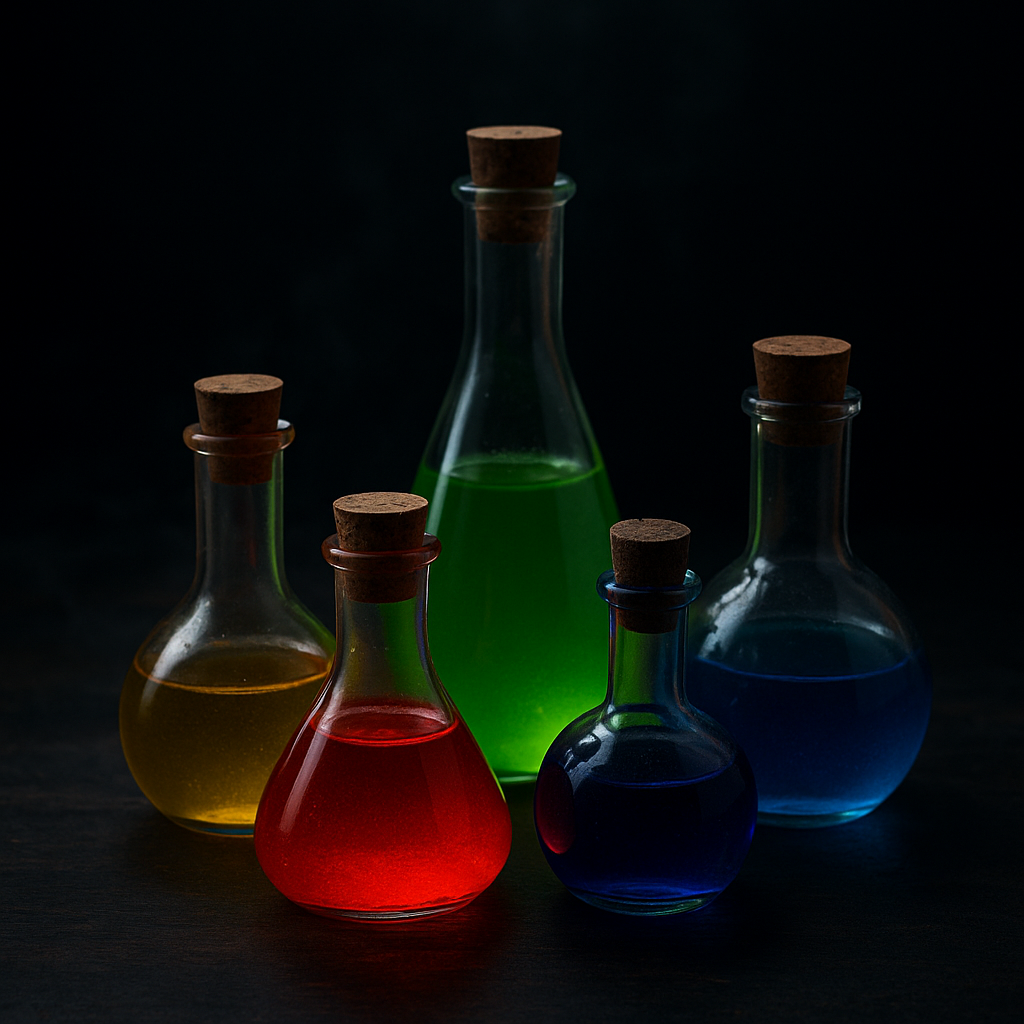
Leveling agents in acid paints: simple chemistry and budget-friendly alternatives
To share
Leveling agents in acid paints: simple chemistry and budget-friendly alternatives
If you delve into dyeing wool with acid dye, sooner or later you will come across the term leveling agent . But what is it actually? And why would you use it? In this blog I will explain in a simple way what it does, how it works with a bit of basic chemistry, and how you can use cheap alternatives from the supermarket or drugstore that work just as well.
🎨 What is a leveling agent ?
A leveling agent helps the dye spread evenly across the fiber. Without one, the dye can set too quickly, resulting in patchy or uneven colors—especially troublesome if you want to dye a nice, even color.
A leveling agent ensures that the paint has time to calmly find its place on the wool, instead of striking immediately as if it were Black Friday.
🧪 Some basic chemistry (very simply explained)
Acid dye works best on protein fibers (such as wool and silk) in an acidic environment . The dye molecules are negatively charged, and the wool fibers become positively charged when acid is added. They attract each other, just like a magnet.
However, if the acidity (pH) is too high at the beginning, the dyes will adhere to the wool too quickly . This will result in uneven distribution of the color. Leveling agents help slow or direct this process—by adding the acid gradually or by adding other substances that slow down the absorption.
🧂 Cheap helpers that you may already have at home
1. Citric acid 🍋
A popular acid in dyeing. It is a powder that is easy to dose and has no odor like vinegar. It lowers the pH of your dye bath, allowing the dye to bind to the wool. If you add it later, you give the color time to spread nicely.
Tip: Only add citric acid when the bath is already slightly warm, for a more even colour.
2. Vinegar 🧴
Classic, cheap and widely available. Like citric acid, it lowers the pH, but it is already diluted. Ideal for beginners, although you have to put up with the smell.
Tip: Use regular white vinegar. Start with a little and add more later in the process.
3. Glauber's salt (sodium sulfate) 🧂
This salt doesn’t affect the pH, but it does slow down how quickly the dye binds to the wool. It’s a bit like obstacles on a busy street—the dye has to get past them, and that takes time.
Tip: Often used in the professional textile world, but can also be found online or at some drugstores.
4. Table salt (sodium chloride) 🧂
Believe it or not, regular table salt can do a bit of the same thing as Glauber's salt. Not as effective, but it does help slow down the absorption a bit.
Tip: Use this if you are dyeing larger amounts of wool at once and want a more even result.
5. Ammonium Sulfate 💨
A hidden gem. This works both as an acid (lowering the pH) and as a leveling agent. It helps keep the acidity stable, making the dyeing process smoother.
Tip: Often found in garden shops as fertilizer!
6. Household ammonia (ammonium hydroxide) 🧼
Now it gets interesting: this is not an acid, but a base . Why would you add that? Because then you can start with a basic bath, and slowly add acid to lower the pH. This allows the paint to adhere super evenly.
⚠️ Please note: Ammonia stinks terribly and should only be used in well-ventilated areas, with gloves and a face mask. Not for beginners, but a powerful tool!
🧶 In short
Want beautifully evenly dyed strands? These simple tools can help you get a long way:
| Excipient | What it does | Where to buy |
|---|---|---|
| Citric acid | Lowers pH, mildly acidic | Drugstore, health food store |
| Vinegar | Lowers pH, slows absorption | Supermarket |
| Glauber's salt | Delays absorption without affecting pH | Drugstore or online |
| Table salt | Slows down recording a bit | Your kitchen cupboard |
| Ammonium sulphate | Lowers pH and acts as a leveling agent | Garden center |
| Household ammonia | Starts basic, slows down absorption considerably | Supermarket cleaning department |
Finally
You don’t need to buy expensive chemicals to get great results. With a little basic knowledge and ingredients from the supermarket, you can achieve a lot. Feel free to experiment with different combinations, keep track of what you do, and find out what works best in your painting practice.
Happy painting—and may your strands always be smooth and radiant!
I would love to hear if my blog has been of any use to you and maybe you dare to send me a picture of your results, that would be interesting!

